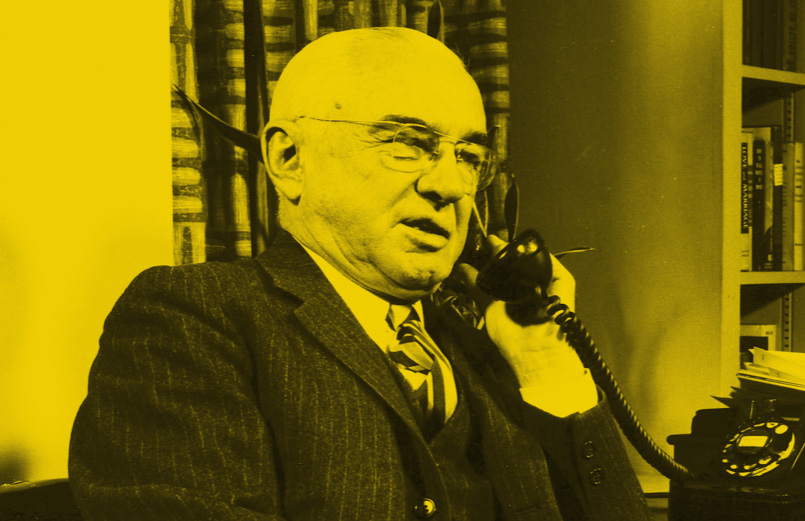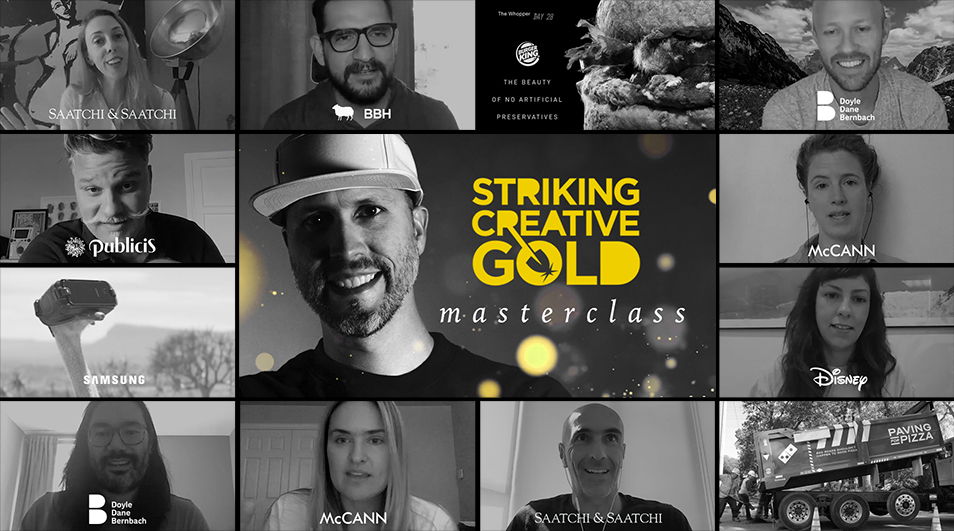There's a lot of buzz around brainstorming not being a thing anymore. This Forbes article is but one of many debunking the myth of brainstorming being great for coming up with ideas. But guess what? 70 years later, brainstorming is still around. And for one reason:
It has a very cool name.
Alex Osborn, the man who invented brainstorming, didn’t get everything right, but the name “brainstorm” was certainly a home run.

Alex Osborn, the father of Brainstorming, asking for ideas over the phone.
Since the late 40’s when Osborn – who happens to be the “O” in BBDO – gave brainstorming to the world, his creation has been scrutinized, debunked, evolved, changed and re-adapted. The brainstorming techniques used today by IDEO and other creative companies are so different from Osborn’s original process they should not be called brainstorms. Yet, they are, because no one wants to let go of that supercool name.
Would you rather tell your wife/husband when you get home that you took part in a “brainstorm", or in a group idea-generating session?
“Brainstorm" for me, any day of the week, please.
Many articles today that debunk brainstorming still take as reference Osborn’s model, which was flawed. There's plenty of science out there to prove it. Many better ways to come up with ideas are at our disposal. Heck, telling everyone just to have ideas on their own works better than Osborn's brainstorm. Yet, it was the starting point to all the knowledge we have today on idea-generating. Fact is, nowadays, "brainstorming" has come to mean "generating ideas" – either in group settings or individually. To which there are many different techniques – some of them have nothing to do with the original brainstorming from the 40s.
Osborn got a few things right, though, besides naming it “brainstorm”. Here are my 3 favorites:
What to do:
Defer judgement
Not judging something right away is very hard. We are wired to judge, whether we like it or not. The thing is, judgement comes uninvited – and it's based on our biases and previous experiences. If we're looking to be open to unknown concepts and ideas, judgement can get in the way. Judgement takes us to "what has been", and keeps us from going into "what it could be".
It's easier said than done, though. Staying in a divergent thinking mode (generating possibilities) without constantly switching to convergent thinking (judging ideas and culling down) takes practice. A brainstorming session with a good facilitator can be a great way to start.
Go for quantity
To have a good idea you generally will go through lots of ideas. I know this from real life experience, and I'm sure any advertising creative can back me up on this one. When working on a Super Bowl brief last year, we could see the floors of the agency littered with dead ideas. They had been taken down the wall to give space to better ones. And that's how it goes, day in and day out. Me and my partner created no less than 30 ideas, each with its own iterations. It wasn't enough – our best idea ended up being the runner up and never made it to the screen. We should have come up with more!
Improve on other's ideas
This is where the true value of brainstorming comes in. Creativity is all about combining, cross-pollinating and influencing. The best thing you can get out of a brainstorm are bits of thinking from others that will prompt you to think differently – and maybe even see some ideas you can steal. There's a terrible myth that says ideas come out of our heads beautiful and ready to go. That couldn't be farther from the truth. Every idea needs to be given space to grow and blossom into awesomeness – or wither and be left behind. Here's an example of a successful idea that started very different from how it ended.
What not to do.
Brainstorm and its rules were designed to do away with inhibitions and allow everyone to share freely. Some aspects in Osborn's original guidelines didn't work as intended. Here are a few tips for group sessions:
Avoid large groups
Large groups should be avoided because it tends to inhibit the sharing of ideas. It also favors the extroverts in the group – keeping the brilliance of the introverts at bay. What would Jobs be without Wozniak? Groups of 2-4 work best. If you have a group of 5, split it into two groups of 2 and 3.
Avoid judging individuals
Evaluation apprehension will black ideas. But, if it's clear in the room that collective assessment will take place, rather than individual, the apprehension will disappear.
Don't wing it
A valuable brainstorming session is well prepared. It will have a well defined objective, a well formulated question to be addressed, and an experienced facilitator who can introduce different idea-generating techniques. If you haven't a good session prepared, you're better off telling participants to come up with ideas on their own.
Don't stop after the session is over
Coming up with initial ideas is just the beginning on the creative process. Ideas need to go through many iterations and prototypes before coming to life.
Brainstorming won't give you an answer.
Here's the key point for me: the solution to your problem will likely not come out of your brainstorming session. Brainstorming will reveal different avenues and undeveloped ideas that will help you get to the best solution. It will jump-start brains and fill minds with stimuli. It's a push down the slope, but the road is still long ahead with more ups and downs, and a lot of pedaling to be done.
At the end of the day, ideas take shape through the hands of individuals. Someone needs to write it up, sketch it up, comp it up, deck it up. Prototype it. Present it. Sell it. Make it. And this whole process can be started with a good brainstorm.


No comments.